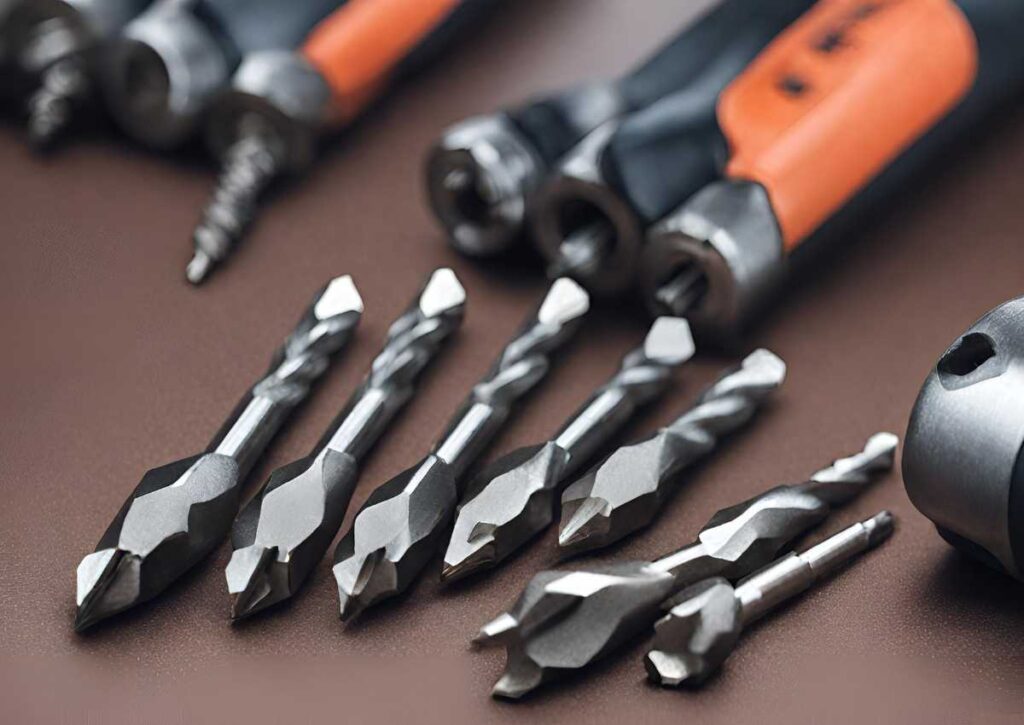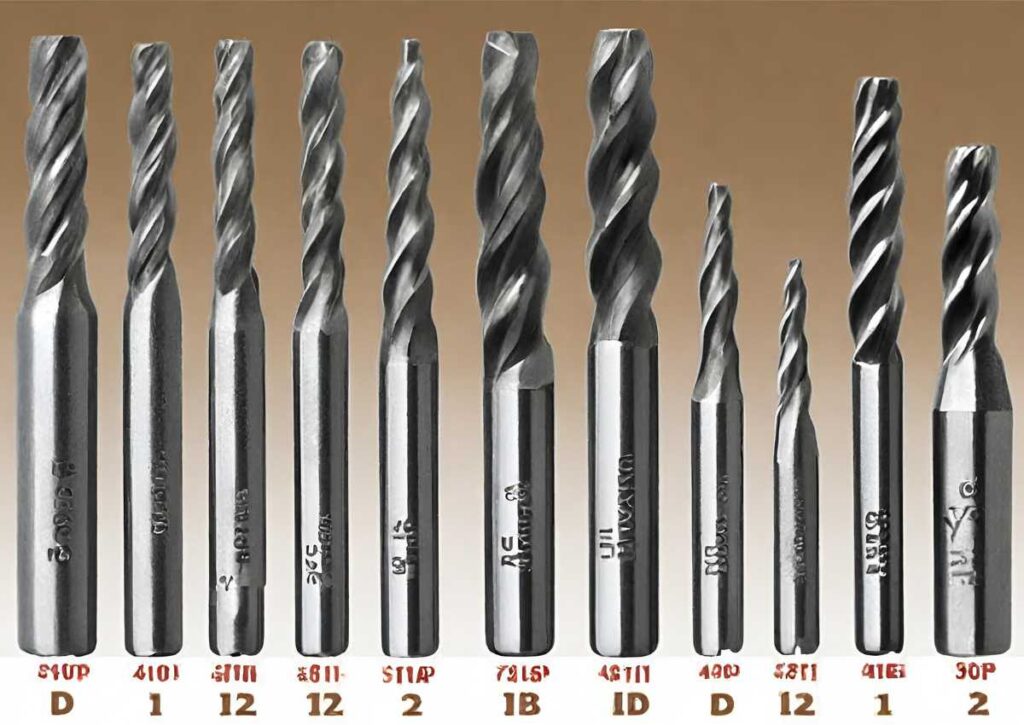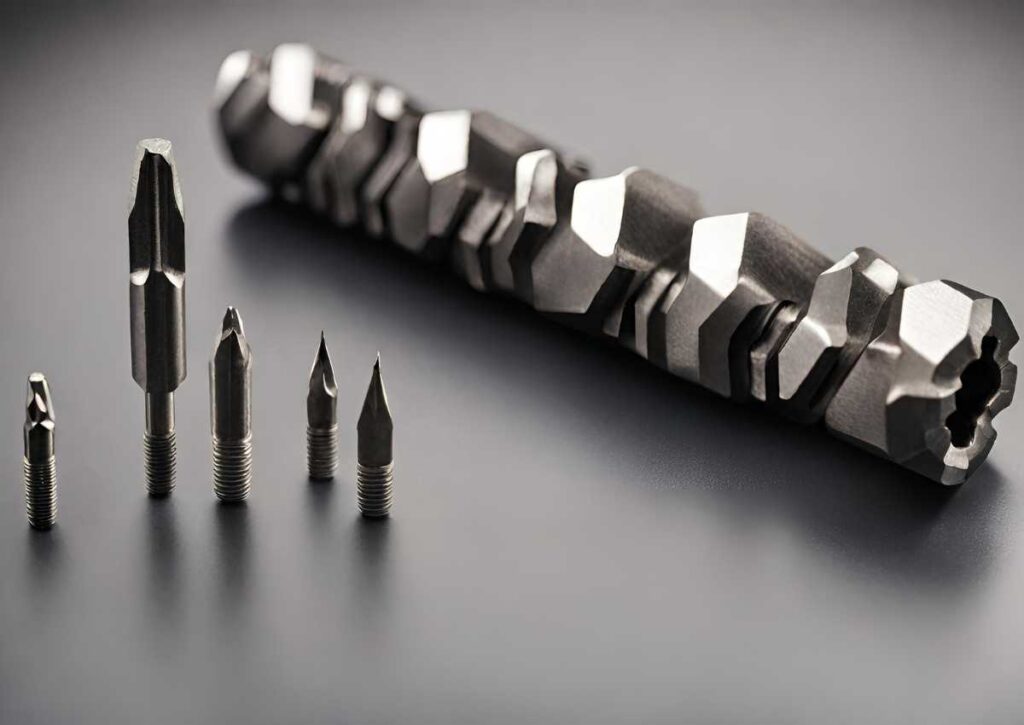Are you planning to tap a 5/16-inch hole and wondering what size drill bit to use? Well, you’re not alone.
Getting the right drill bit size is crucial for a successful tapping process, and using the wrong size can lead to damaged threads or even broken taps.
That’s why it’s essential to understand how to choose the correct drill bit size for a 5/16-inch tap.
Drill Bit for 516 Tap? To use a 5/16 tap, you’ll typically need a drill bit that’s slightly smaller than the tap’s diameter, usually around 17/64 inches.
In this blog, we’ll discuss everything you need to know to get the job done right the first time. So, let’s get started!
Basics of Taps and Drill Bits
When it comes to drilling holes and creating threads, it’s essential to have the right tools for the job.
Taps and drill bits are two of the most commonly used tools for creating threads in metal, wood, and other materials.
We will provide you with an overview of taps and drill bits, including their types and how to measure drill bit sizes.
Overview of taps
A tap is a tool used to create threads in a hole. It is a cylindrical tool with sharp threads that cut into the material, creating internal threads.
Taps come in various sizes, and they’re typically made of high-speed steel or carbide. Taps come in different types, including:
Types of taps
- Taper taps – have a more extended, tapered end that allows them to gradually start cutting threads, making them ideal for starting new threads.
- Plug taps – have a shorter taper and are ideal for threading deeper holes.
- Bottoming taps – have a flat end and are ideal for threading shallow holes or cleaning up threads in previously threaded holes.
Overview of drill bits
A drill bit is a cutting tool that is used to drill holes in various materials. It has a pointed end that rotates and cuts into the material, creating a hole.
Drill bits are available in various sizes and materials, including high-speed steel, cobalt, and carbide.
Types of drill bits
- Twist drill bits – the most commonly used type of drill bit. They have a twisted design that allows them to cut into the material and remove debris efficiently.
- Brad-point drill bits have a pointed tip that allows for precise drilling in wood and other materials.
- Spade drill bits have a flat, paddle-shaped end and are ideal for drilling larger holes in wood and other materials.
Measuring drill bit sizes
The diameter of a drill bit—typically measured in millimetres or fractions of an inch—determines its size. To measure the diameter of a drill bit, you can use a drill bit gauge or a calliper.
It’s essential to use the correct size drill bit when tapping a hole to ensure that the threads are the correct size and depth.
For a 5/16″ tap, you would typically use a 17/64″ or 21/64″ drill bit, depending on the type of tap and the material you’re drilling into.
Having a basic understanding of taps and drill bits is essential to ensuring that you have the right tools for your project.
By knowing the types of taps and drill bits and how to measure their sizes, you’ll be able to choose the right tools for the job and create clean, accurate threads and holes in various materials.
5/16 Tap and Its Applications

5/16 taps are commonly used for creating threaded holes in various materials.
These taps are ideal for creating threads that require a specific size and depth, making them useful for a range of applications.
We will define a 5/16 tap, discuss its common uses, and explore the thread standards associated with it.
Defining a 5/16 Tap
A 5/16 tap is a cutting tool that is used to create threads in a hole. This tap has a diameter of 5/16 inches, which is equivalent to 0.3125 inches or 7.9375 millimetres.
The tap has flutes that help to remove the material and create threads in the hole.
Common Uses of a 5/16 Tap
One of the most common uses of a 5/16 tap is in the creation of threaded holes in metal. This tap is also used for creating threaded holes in plastic, wood, and other materials.
- Creating threaded holes for bolts and screws: A 5/16 tap can be used to create threaded holes in a range of materials to accommodate bolts and screws of the same size.
- Repairing damaged threads: If a threaded hole has been damaged, a 5/16 tap can be used to clean up the threads and restore them to their original condition.
- Creating custom threaded holes: Sometimes, a specific project requires a threaded hole of a particular size and depth. A 5/16 tap can be used to create this custom hole.
- Automotive applications: 5/16 taps are commonly used in the automotive industry to create threaded holes for various components such as bolts, screws, and fittings.
Thread Standards Associated with a 5/16 Tap
When using a 5/16 tap, it is important to understand the thread standards associated with it. The most common thread standards associated with a 5/16 tap are:
- Unified National Coarse (UNC): This is the standard thread for general-purpose fasteners and is used in a wide range of applications.
- Unified National Fine (UNF): This thread standard has a finer pitch than UNC and is used in applications that require a more precise thread.
- Unified National Extra Fine (UNEF): This thread standard has an even finer pitch than UNF and is used in applications that require an extremely precise thread.
It is important to choose the appropriate thread standard based on the application and the material being threaded.
Using the wrong thread standard can result in a poor fit or even damage to the material being threaded.
Choosing the Right Drill Bit Size for a 5/16 Tap

When it comes to tapping a hole for a 5/16 bolt or screw, choosing the right drill bit size is crucial.
Using the wrong size can result in an improperly threaded hole that could lead to a weak or loose connection.
Factors to consider when selecting a drill bit size
When selecting a drill bit size for a 5/16 tap, several factors should be taken into account, such as the type of material you’re working with and the depth of the hole you need to tap.
- Material type: Different materials will require different drill bit sizes to achieve the desired thread depth. Softer materials such as aluminum or brass may require a smaller drill bit size, while harder materials like stainless steel may require a larger one.
- Tap type: The type of tap you’re using will also affect your drill bit selection. A taper tap requires a smaller drill bit size compared to a plug or bottoming tap.
- Hole depth: The depth of the hole you need to tap will also influence the drill bit size you choose. If you’re tapping a shallow hole, a smaller drill bit may be sufficient, whereas deeper holes may require a larger drill bit to ensure proper thread depth.
- Thread type: Lastly, consider the thread type you’re creating. Coarse threads will require a larger drill bit than fine threads.
Recommended drill bit size for a 5/16 tap
The recommended drill bit size for a 5/16 tap is 17/64 inches, or 6.75mm. This drill bit size will allow you to achieve the appropriate thread depth for a 5/16 bolt or screw.
However, it’s important to keep in mind that this is just a recommendation, and you should always consider the factors listed above before selecting a drill bit size.
Effect of material type on drill bit size selection
The type of material you’re working with will have a significant impact on your drill bit size selection.
Softer materials such as aluminum, brass, or plastic may require a smaller drill bit size, while harder materials like stainless steel or cast iron may require a larger one.
The reason for this is that softer materials are easier to cut, so you don’t need as much force to create the necessary thread depth.
On the other hand, harder materials require more force, so a larger drill bit is necessary to achieve the same thread depth.
Selecting the right drill bit size for a 5/16 tap is essential for ensuring a secure and tight connection. Consider the material type, tap type, hole depth, and thread type before making your selection.
Tips for Successful Tapping

Tapping is a common metalworking process that involves cutting internal threads in a hole with the help of a tap.
However, tapping can be a challenging task, especially if you are not familiar with the process.
We will discuss some useful tips to help you achieve successful tapping, including how to properly secure the workpiece, apply cutting fluids and lubricants, maintain correct speed and pressure, and ensure tap alignment.
Properly Securing the Workpiece
Before you start tapping, it is crucial to ensure that your workpiece is securely fastened to your worktable or vice.
A loose workpiece can cause the tap to slip or break, resulting in damaged threads or injury. Here are some tips to properly secure your workpiece:
- Use a vice or clamp to hold the workpiece securely in place.
- Use the correct size and type of drill bit to create a pilot hole that matches the size and thread pitch of your tap.
- Consider using a center punch to mark the center of the hole and prevent the drill bit from wandering.
Applying Cutting Fluids and Lubricants
Cutting fluids and lubricants are essential for successful tapping. They help to reduce friction, dissipate heat, and prolong the life of your tap. Here are some tips for applying cutting fluids and lubricants:
- Use a high-quality cutting fluid or lubricant that is suitable for the material you are tapping.
- Apply the fluid or lubricant generously to the tap and workpiece.
- Consider using a tapping paste that contains both cutting fluid and lubricant for extra protection.
Maintaining Correct Speed and Pressure
The correct speed and pressure are critical to the success of your tapping operation. Here are some tips for maintaining correct speed and pressure:
- Use a drill press or tapping machine to ensure consistent speed and pressure.
- Adjust the speed and pressure according to the material you are tapping.
- Use a tap drill chart to determine the correct tap size and recommended cutting speed.
Ensuring Tap Alignment
Proper tap alignment is essential to achieving accurate and clean threads. Here are some tips for ensuring tap alignment:
- Use a tap guide or alignment tool to ensure that the tap is perpendicular to the workpiece.
- Make sure that the tap is inserted into the pilot hole and aligned with the center punch mark.
- Use a tap wrench to turn the tap slowly and smoothly, keeping it aligned with the pilot hole.
Troubleshooting Common Tapping Issues
Tapping is a fundamental process that involves cutting threads inside a hole to create a secure fastening between two components.
However, even with the right tools, tapping can sometimes go wrong, leading to broken taps, stripped threads, and inaccurate hole depth.
Broken taps and drill bits
One of the most frustrating issues when tapping is breaking the tap or drill bit inside the hole.
This can happen due to several reasons, including applying too much pressure, using dull or worn-out cutting tools, or working with hard or brittle materials.
To prevent this issue, always use sharp and high-quality taps and drill bits. Also, ensure that the material you’re working with is adequately secured to prevent movement during the tapping process.
In case a tap or drill bit breaks inside the hole, try using an extractor tool to remove it.
If that doesn’t work, you may need to use a drill bit slightly larger than the tap’s diameter to remove the remaining pieces carefully.
Stripped or damaged threads
When the threads in the hole are stripped or damaged, the fastening between components becomes weak and insecure.
This issue can happen due to various reasons, such as using the wrong tap size, incorrect tapping speed, or insufficient lubrication.
To troubleshoot stripped or damaged threads, start by checking the tap and hole size compatibility. If they don’t match, use the correct tap size and adjust the tapping speed accordingly.
Also, ensure that you’re using adequate lubrication to reduce friction and prevent heat buildup during the tapping process.
If the threads are severely damaged, you may need to use a thread repair kit or re-tap the hole with a larger diameter.
Tap not starting correctly
Another common tapping issue is when the tap doesn’t start correctly and instead wanders off-center or breaks. This can happen due to insufficient pilot hole depth, wrong tap alignment, or incorrect tap size.
To troubleshoot this issue, ensure that the pilot hole depth matches the tap’s diameter and is drilled straight.
Also, make sure that the tap is aligned correctly with the pilot hole and that you’re using the correct tap size.
If the tap still doesn’t start correctly, you may need to use a center punch to mark the hole’s center or use a tapping guide to ensure proper alignment.
Inaccurate hole depth
Finally, inaccurate hole depth can cause tapping issues such as over-tapping or under-tapping, leading to weak fastenings or damaged threads.
This issue can happen due to using the wrong drill bit size or not drilling to the correct depth.
To troubleshoot this issue, ensure that you’re using the correct drill bit size and that you’re drilling to the correct depth.
You can use a depth gauge or a piece of tape wrapped around the drill bit to indicate the correct depth.
Also, avoid over-drilling or under-drilling the hole, as this can affect the tap’s performance and the fastening’s strength.
Conclusion
In conclusion, selecting the right drill bit size for a 5/16 tap is crucial to ensure successful results. Using the wrong size can lead to stripped threads or a tap that won’t fit securely.
As we’ve discussed, the recommended drill bit size for a 5/16 tap is 17/64, but it’s always best to double-check with the manufacturer’s recommendations.
Moreover, it’s essential to use proper tapping techniques to achieve the desired outcome.
This includes ensuring that the tap is perpendicular to the workpiece, using the correct tapping lubricant, and being patient and consistent throughout the process.
With the right tools, techniques, and knowledge, anyone can tap holes with precision and accuracy. We hope this guide has been helpful in your drilling and tapping endeavors.
FAQs
What drill bit size should I use for a 5/16 tap?
You’ll need a drill bit that’s slightly smaller than 5/16 inch. Specifically, a 17/64 drill bit will work perfectly for tapping a hole that accommodates a 5/16 thread.
Which drill bit matches a 5/16 tap for threading?
To prepare for a 5/16 tap, grab a 17/64 drill bit. This size will create the ideal hole for tapping threads of that specific size.
What’s the right drill bit for 516 tap?
Use a 17/64 drill bit when prepping for a 5/16 tap. This size aligns perfectly with the threading you’re aiming for.
Can you specify the drill bit size for a 5/16 tap?
Sure, for a 5/16 tap, opt for a 17/64 drill bit. It’s the right match for creating the hole needed to tap threads of that size.
What drill bit should I use to accommodate a 5/16 tap?
You’ll want a 17/64 drill bit when preparing for a 5/16 tap. This size sets the stage for threading the 5/16 bolt or screw perfectly.









